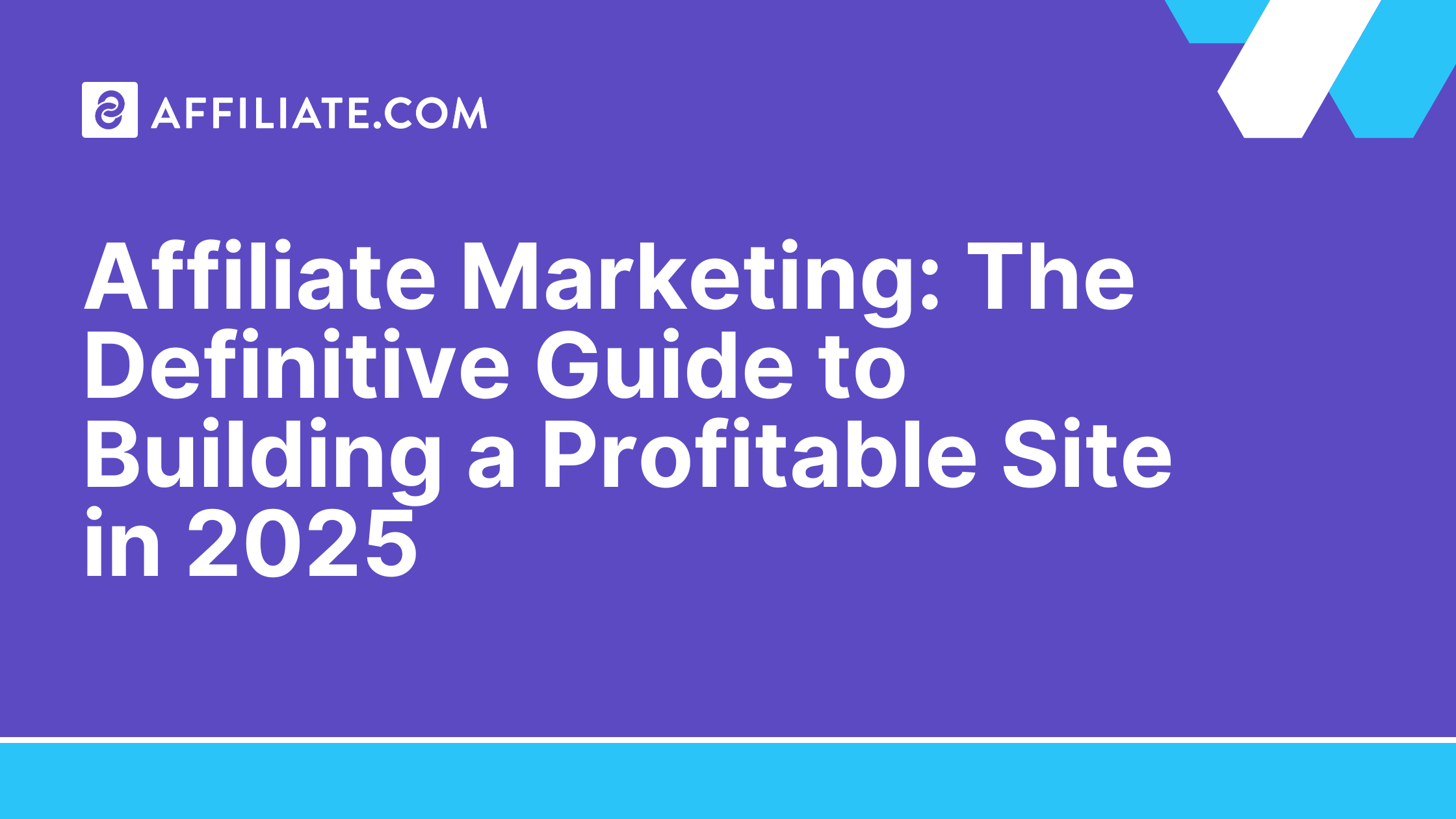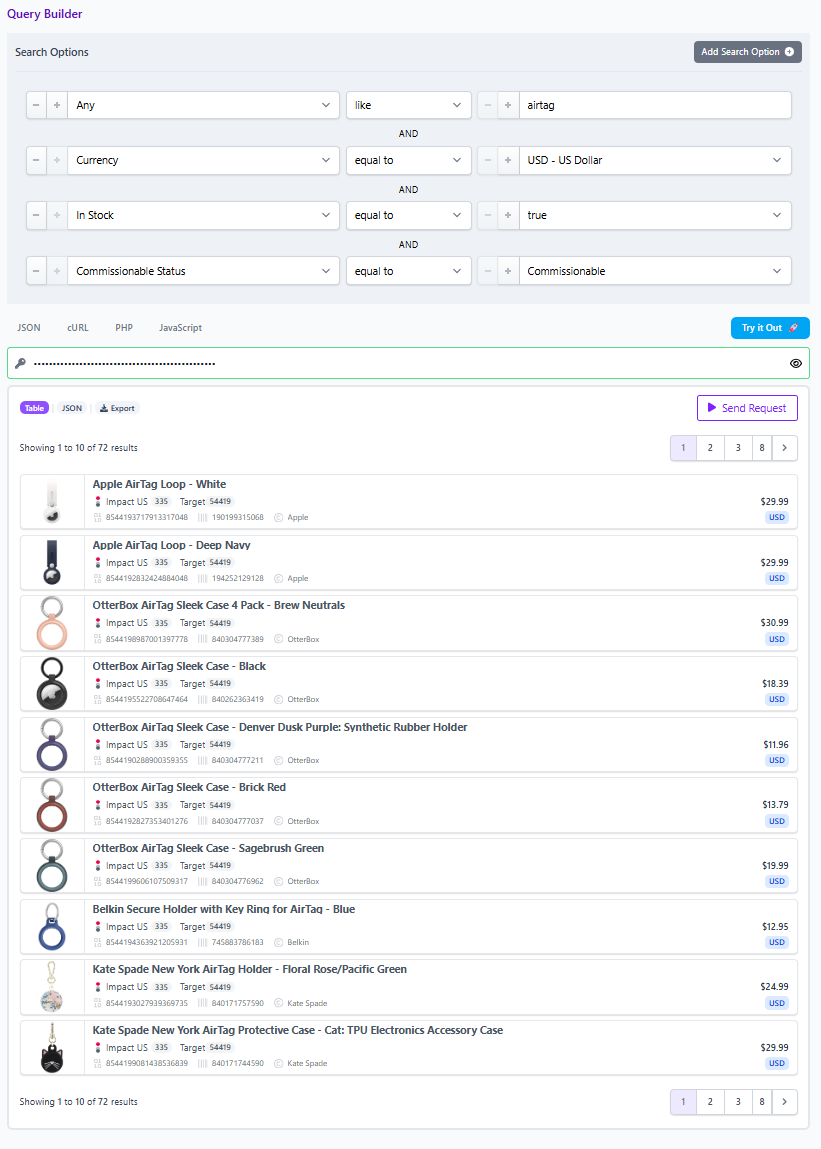Affiliate Marketing: The Definitive Guide to Building a Profitable Site in 2025

Affiliate marketing is the performance model where you earn a commission for driving measurable actions (clicks, leads, sales) to a merchant. In 2025 the winners operate like product publishers: they normalize messy data, compare prices and payouts, and surface the best offer at the exact moment of intent.
This guide condenses a playbook we see working across professional programs. It pairs business mechanics with practical workflows using Affiliate.com’s data layer—covering more than 30 networks and over a billion products—to help you source, compare, and publish offers with rigor.
The business model, in one page
- Value chain: traffic → product discovery → comparison/validation → click-out → conversion → payout.
- Unit economics: RPM (revenue per 1,000 sessions) = CTR × CVR × AOV × Commission Rate. Raise any factor, and your site compounds.
- Compounding levers: search intent coverage, inventory breadth, better prices, higher commission rates, trust (UX + content), and operational freshness.
Data advantage: treat offers like a catalog, not links
Affiliate.com ingests fragmented feeds and normalizes them so you can actually work the catalog:
- Match identical products across merchants (even when titles differ) to build true like-for-like comparisons.
- Cross-currency comparisons; see Final Price, Sale Price, Sale Discount, and Ship Price apples-to-apples.
- Barcode-match / ASIN-match to collapse variants and deduplicate noise.
- Layered filtering across Brand, Category, Color, Size, Availability, Commissionable Status, In Stock/Stock Quantity, and more.
- Network/Merchant filters (by Network Name/ID and Merchant Name/ID) plus an Any field for broad discovery.
- Shareable query links and Comparison Sets so research → publishing is one motion.
Why it matters: profitable sites publish the best outbound decision at scale. You can’t choose the best merchant or angle without clean, comparable product + pricing + commission data.
A repeatable sourcing workflow (research → publish in minutes)
1) Discover inventory with intent
- In Query Builder, start broad with Any = “airtag” (or your seed term).
- Filter by Currency, In Stock, and Commissionable Status = true to avoid dead offers.
- When ready to go precise, barcode-match/ASIN to lock onto the exact SKU.

2) Compare identical products across merchants
- Use product matching to line up competing listings.
- Sort by Final Price or Sale Discount to identify consumer value; then Sort by Commission URL availability and your Commission Rate notes to weigh publisher value.
- Where geos differ, apply cross-currency and Country filters to keep results local.
3) Choose the right merchant for the click-out
Decision rule of thumb:
- If price spread ≥ 5–8% and stock is good → send to lowest Final Price (consumer surplus).
- If prices cluster but one program pays materially more and converts well → route by Commission Rate + historical CVR.
- If both align, push a multi-merchant comparison (higher trust and CTR).
4) Publish with reusable components
- Build Comparison Sets for the matched product; include 2–4 top merchants.
- Drop a Price Comparison Snippet; optionally display/hide descriptions to fit page density.
- Theme your snippets so pricing updates automatically as merchants change deals.
Site architecture that prints money
Start with intent clusters, not categories:
- Transactional (bottom-funnel): “best price + product name/sku,” “where to buy,” “deal/discount/clearance.”
- Commercial investigation: “best [product type] under $X,” “[brand] vs [brand],” “[product] alternatives.”
- Problem-solution: “how to [job], best tool for [job],” leading to curated product sets.
For each hub:
- Inventory layer: live widgets powered by Comparison Sets for every product referenced.
- Editorial layer: concise spec tables, unique testing notes, and why one merchant wins (price, warranty, shipping, returns).
- Decision layer: “Our pick,” “Budget,” “Fastest shipping,” and “Highest cashback/commission” when relevant.
Raising RPM: six practical plays
- Normalize & deduplicate before writing. Thin, mismatched offers crush trust and CTR.
- Commission discipline: track Network ID → Merchant ID and your approved Commission Rate; publish where you’re paid.
- Geo-intent routing: detect country, filter inventory to local currency, and favor in-stock local merchants.
- Sale-aware UX: surface On Sale = true rows first; add a “Only show discounted” toggle.
- Availability-first: hide or down-rank items with Availability ≠ in stock or low Stock Quantity.
- Shareable research: link to the shareable query in internal docs so editors ship updates fast.
Example: a single-product price benchmark (10-minute build)
- Query:
ASIN equal to B0…(or Barcode equal to 123…), In Stock = true, Commissionable Status = true. - Sort: Final Price ascending, second sort Sale Discount descending.
- Deduplicate: set Deduplication = on to remove title variants.
- Publish: create a Comparison Set of the top 3 merchants, embed the snippet in your “Best price” page, and let pricing auto-refresh.
Measurement that matters
- CTR from comparison blocks (widget-level).
- Click share by merchant (do users follow your recommendation?).
- Conversion rate + EPC by merchant/network.
- Price freshness % (offers where Final Price on page = live feed).
- Stock coverage % (pages where primary rec is in stock).
Iterate your decision rules monthly; re-run queries with Last Updated to catch stale feeds.
Governance & compliance
- Use Commission URL fields and network-approved links only.
- Clearly disclose affiliate relationships; keep “review vs price” language consistent with your data.
- Avoid price promises; verify in the live UI when highlighting discounts.
Your next step
Open the Query Builder to explore products across more than 30 networks, barcode-match identical SKUs, and generate Comparison Sets you can embed in minutes. For programmatic workflows, use the Product API to filter, sort, and deduplicate by the fields above, then pipe winning offers directly into your CMS.
